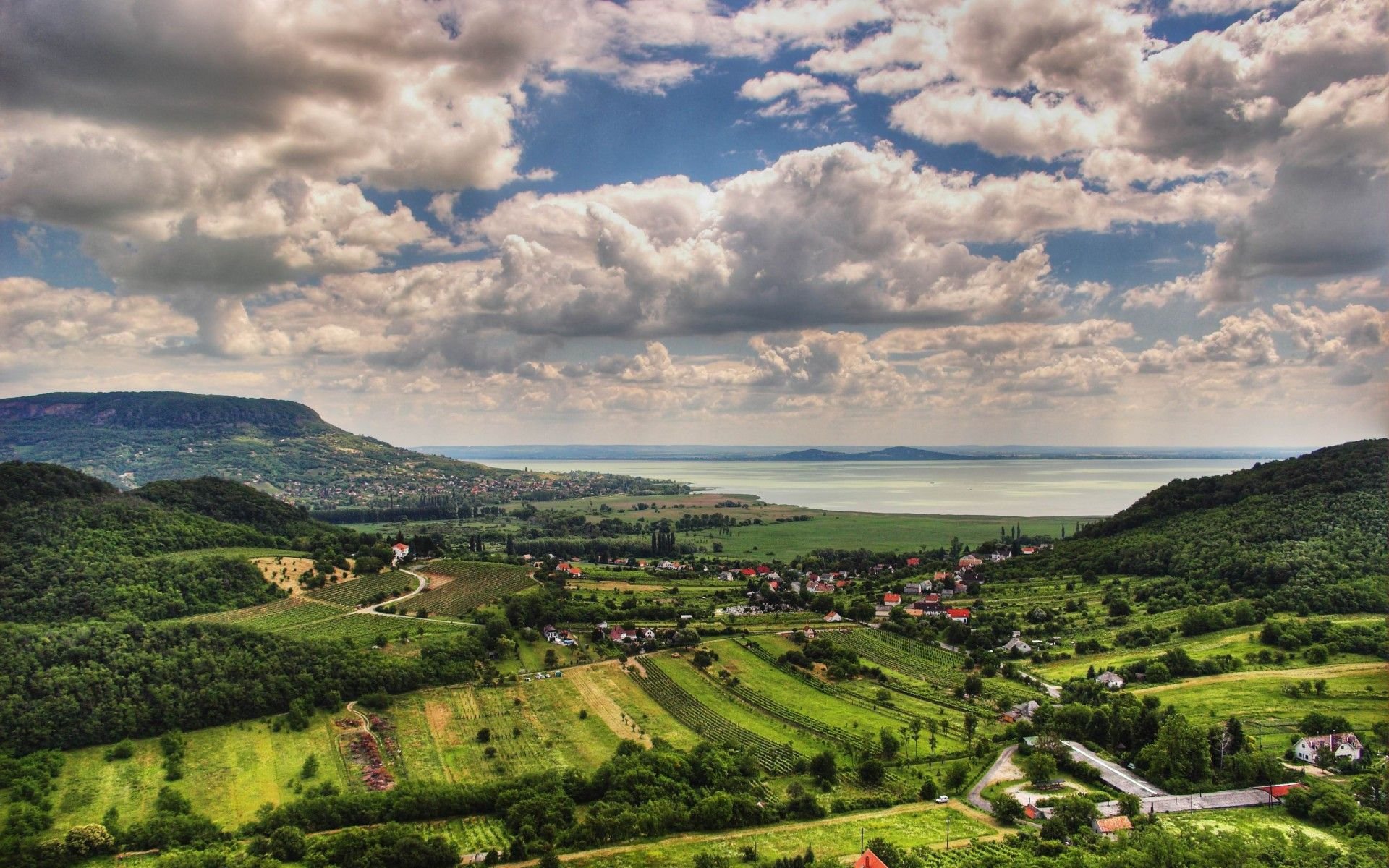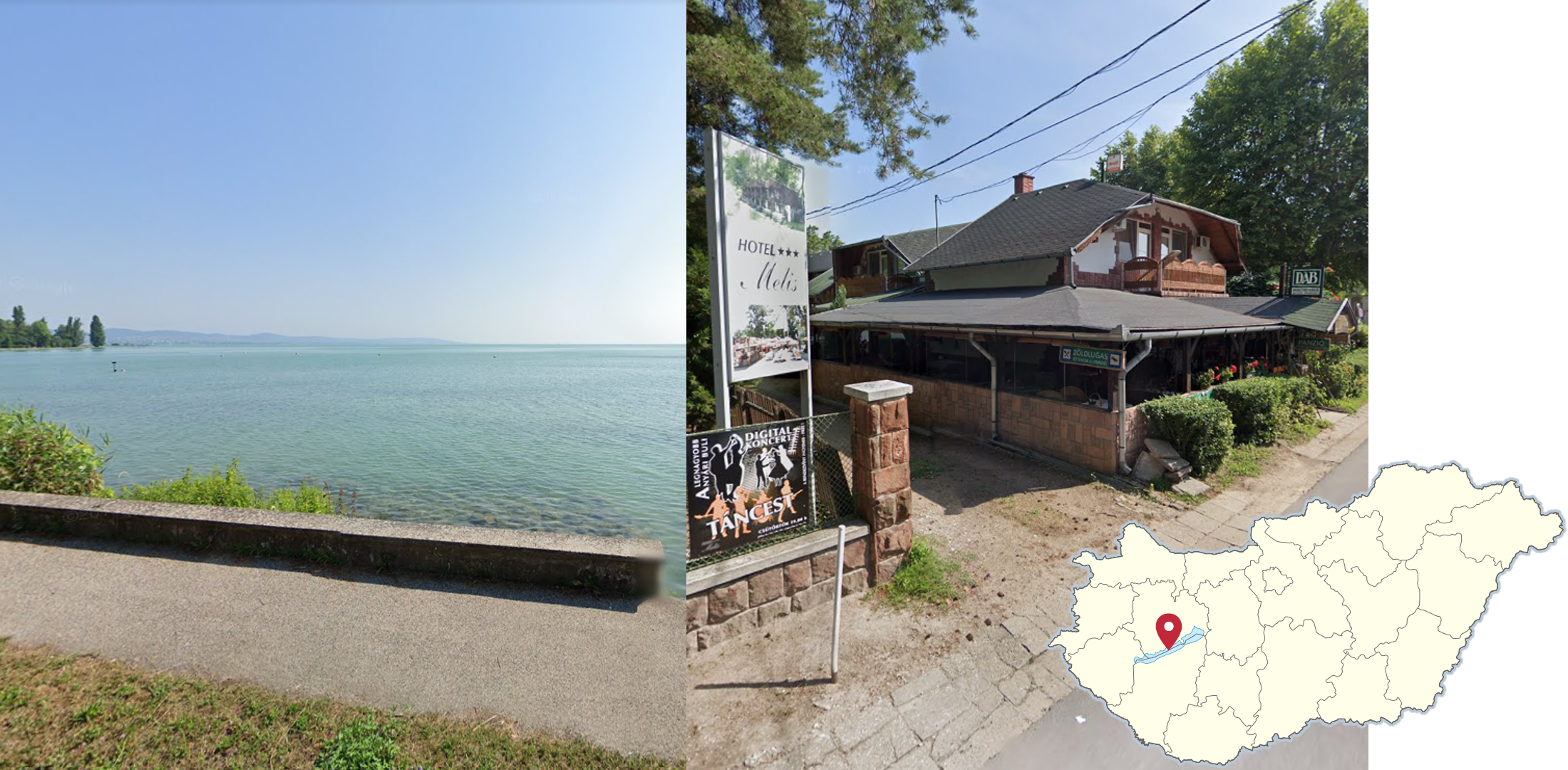
Hungary
Hungarian bollards are black-and-white, wedge-shaped, and typically have a red reflector at the front, and a white reflector at the back. Blue reflectors are also somewhat common.
NOTE: Croatian bollards are very similar. They do, however, typically have the reflector closer to the top, and appear somewhat thinner than in Hungary.
The most common type of utility pole in Hungary is a concrete holey pole, with relatively thin holes going all the way down to the ground. Wooden poles are also somewhat common.
NOTE: In eastern Europe, Poland and Romania also commonly use holey poles. Polish holey poles typically do not have holes down by the ground, and tend to be relatively thin. Romanian holey poles normally either have much wider, or much taller holes.
Hungarian chevrons are white on red.
Black-and-white chevrons may also be seen, but are considerably less common.
The Hungarian language has a unique look, with a very large number of acute accents, umlauts over o’s, and long words. The letters "Ő" and "Ű", with double acute accents, are unique to the language.
NOTE: Hungarian is also spoken in some parts of neighbouring countries: notably there are large Hungarian-speaking communities in central Romania and southern Slovakia.
Hungarian pedestrian crossing signs have five stripes. The person is wearing a belt. There is also a second, less common, type with four stripes and the person holding a bag.
The belt is located noticeably low on the person’s body, almost as if the person is sagging his pants. This is unique to Hungary.
NOTE: Among neighbouring countries, Croatia and Slovakia also have five stripes and a belt.
Hungarian phone numbers consist of either 8 or 10 digits. If the number has 8 digits, the first and second digit is the area code. And if the number has 10 digits, the third and fourth digit is the area code. The only exception is Budapest, where only the first or third digit, being a 1, respectively is the area code.
NOTE: Area codes whose second digit is 0 or 1 are not region specific.
If you see a blue or green street sign shaped like an arrow, attached to a utility pole or street light, you are likely to be in the county of Szabolcs-Szatmár-Bereg.
NOTE: Blue arrow-shaped street signs can also be found in Dunakeszi, north of Budapest. However, those are attached to blue sign posts.
Lake Balaton is one of the largest lakes on mainland Europe, and the only large lake visible on street view in Hungary. The area surrounding the lake is moderately hilly, fairly built up and a big tourist destination, with a much higher density of small hotels than almost anywhere else in the country.
GeoGuessr’s own official maps are not very good, for a variety of reasons. Plonk It recommends you play these maps instead:
In addition, here are some resources to help you practise Hungary:
Plonk It Hungary (map link) - This map contains locations for practising each meta in the Plonk It Hungary guide from step 2 to 3.



























